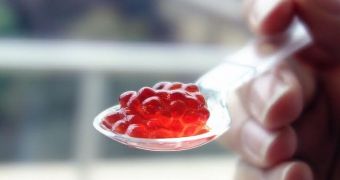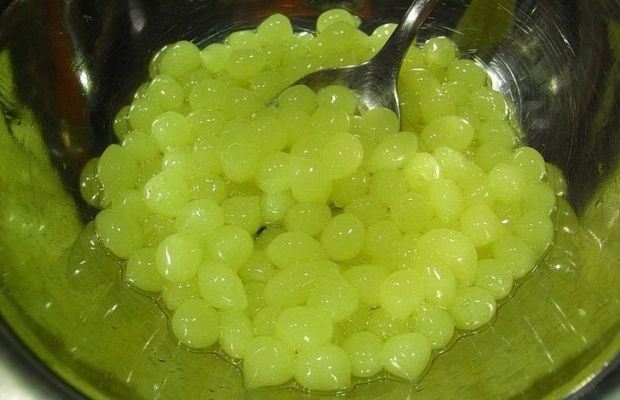Spherification is a process originally developed in the 1950s, but it looks like interest in it never really went up, until now. And we have Dovetailed to thank for it, as well as the recent surge in 3D printed food.
3D printed food isn't exactly something that most people are looking forward to, but there will always be someone willing to at least sample it.
After all, curiosity will get people to do anything, especially if they can be sure it won't kill them or make them throw up.
We're still leagues away from successfully 3D printing actual foodstuffs, though there has been some success with pizza. Only because it's made from primarily fluid ingredients though.
When it comes to complex things like roast and, more importantly, things from nature (fruit, vegetables, etc.), it's not as easy as throwing some dough, cheese chopped meat.
Dovetailed didn't let that get in the way though. Or, more precisely, it steamrolled through the obstacle and figured that if it can't recreate pears and apples, it may as well make its own versions of the fruit.
Spherification enabled it to achieve its goal. It's a molecular gastronomy technique that shapes liquids into tiny spheres.
Dovetailed hasn't exactly explained the process it employed, but it probably uses the technique whereby a juice or puree from a fruit is mixed with a very small amount of sodium alginate, then placed in a bowl of soluble calcium salt.
The result resembles caviar a great deal: tiny spheres held together by a thin skin that can also attach to other spheres.
And that's the secret to building Dovetailed's “fruit.” The 3D printed takes the tiny balls and combines them with others. The spheres don't necessarily need to possess the same flavor, and can be shaped into apples, pears, or other fruit.
You won't actually get apples, pears or whatever, especially if you choose the shape merely because of familiarity, but the result is edible enough. And if you, say, use spherificated apple juice, the resulting apple should taste familiarly enough. In the picture above, you can see a 3D printed raspberry, and below is spherificated apple juice.
It only takes a few seconds to print a fruit, or so Dovetailed claims, but we can't know for sure what that means for the size of the fruit. And the Cambridge-based company didn't really reveal the printer either.There probably won't be a market for this in the near future, but astronauts might appreciate the idea, and it's good to know that a tried and proven technique exists, just in case.

 14 DAY TRIAL //
14 DAY TRIAL // 

